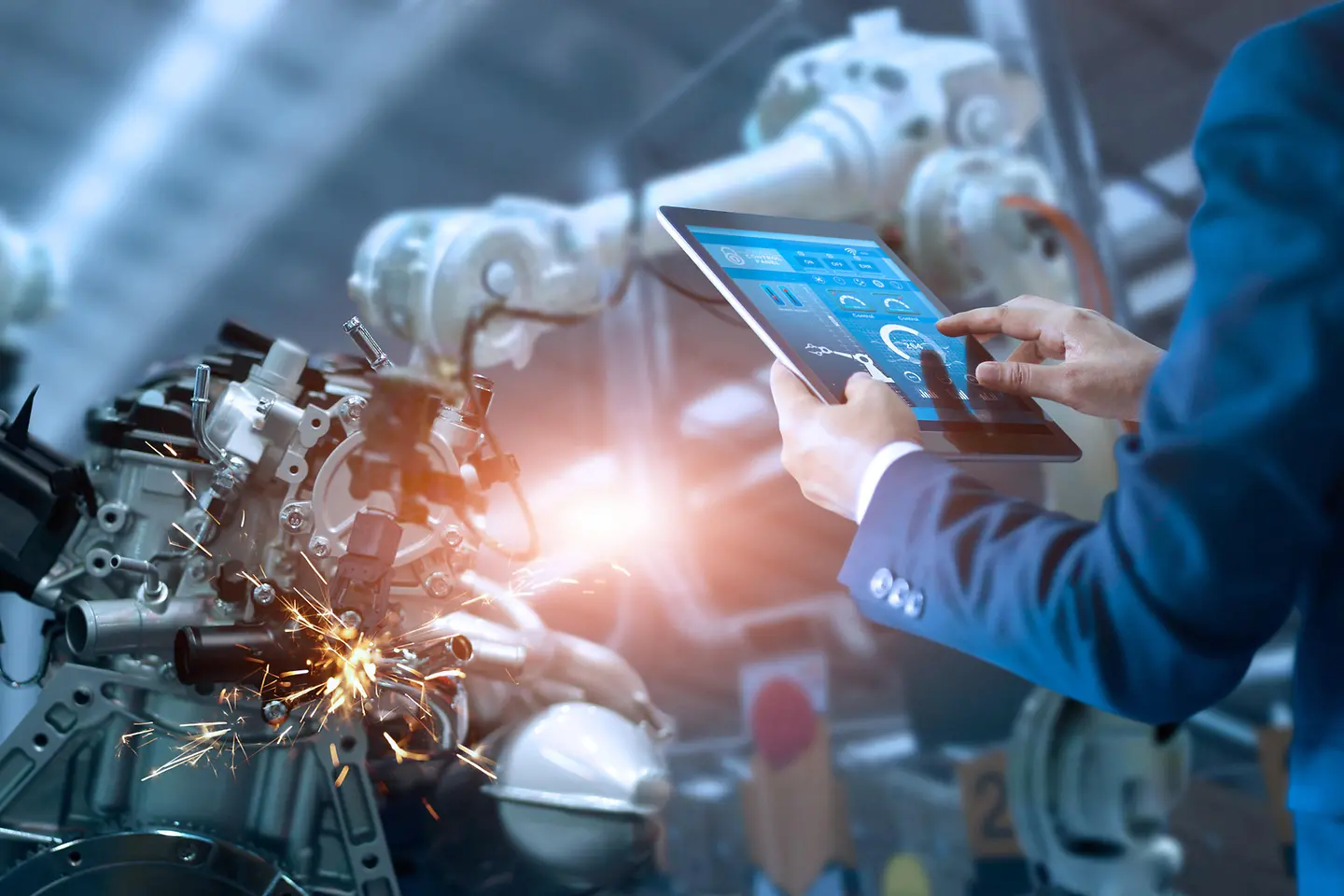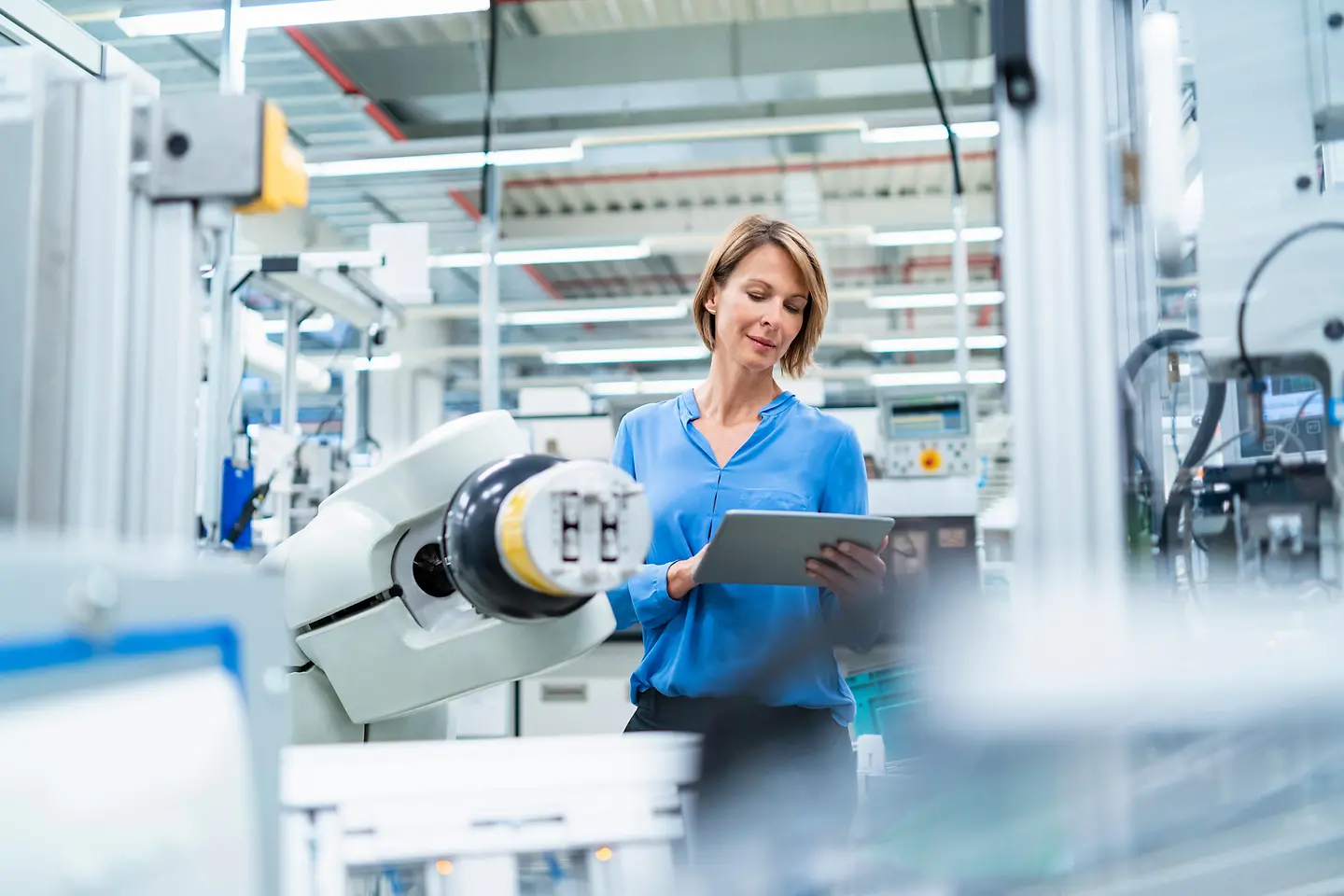
Manufacturing companies are constantly facing the task of planning new factories and building them quickly and cost-effectively to expand their production capacities. Digital twins in the Industrial Metaverse offer an alternative to classic project approaches. The digital images give project teams answers to “what if” questions in real time. Misplanning, time delays, costly corrections, and “workarounds” are avoided.
The mayor is here. The champagne corks pop. The new factory building and factory floor – a showpiece of the recently developed industrial park is ceremoniously inaugurated. During the first inspection, the managing director presents the latest generation production ecosystem to the guests. “Where are the toilets and the changing rooms?” The managing director pauses.
Forgotten toilets, indoor cranes in conflict with steel girders, creative retrofit solutions for maintenance personnel access to ventilation under the hall roof, or missing power cables or storage areas for pre-components – all this could never happen to professional production companies and their respective production lines, of course. Or could it?
The planning and construction of modern production facilities have their complexities – as any expert will confirm. Not only because a multitude of perspectives – increasingly also about flexible production – must be considered, but also because many parties are involved in the factory planning and construction. Time and again, preliminary work or specific planning specifications are missing. Nevertheless, subsequent activities are already pushed forward to keep the schedule. Missing communication and missing data in complex projects cause breaks sooner or later in every project. Or small errors/inconsistencies in an early project phase are carried through to the end (“We'll sort that out later”) and then cause trouble shortly before the finalization of the project. If the central industrial framework conditions change during the planning phase, the project manager's hair quickly grows gray. Alternatively, the finished factory is up and running. But then the toilets are at the other end of the site.

A common 3D model that examines the introduction of changes and their effects on the subsequent production process would be a helpful tool for identifying errors at an early stage. The advantages of 3-dimensional planning over 2-dimensional have been known for a long time. But up to now, 3-dimensional models have been rather static. They could only represent reality to a limited extent. The introduction of changes took time far from fulfilling real-time demands.
A digital twin, a virtual image of an entire factory with all its elements in a metaverse, including its processes until now a distant digital pipe dream. The real technical possibilities lagged far behind the demands. Market figures show that companies see the potential of metaverses. But they are also looking for a technology that serves immersive user experience expectations and is future-proof.
The search for that platform may now be coming to an end. With a new generation of technological capabilities both hardware-side and software-side, the old pipe dream is now becoming a reality. Pools of high-end graphics cards, AI models, and tried-and-tested animation software merge into a blend for detailed representations of reality, that results in a highly optimized and innovative experience.
With the Industrial Omniverse, NVIDIA has designed a powerful platform for such animations. The latest GPU generations are not only capable of training complex AI models (such as for ChatGPT) but can also realize real-time animations of complex digital twins for creating industrial metaverses. For animation software, NVIDIA is reaching into its bag of tricks, combining its production hardware with Pixar's 3D framework Universal Scene Description (USD) for describing, consolidating, simulating, and collaborating in 3D worlds for industrial digitalization.
What's good enough for Wall-E, Buzz Lightyear, Nemo or Lightning McQueen also proves its value for simulations and modeling in “real” business. Not only for factory planning, but also for realistic showrooms or virtual test drives of autonomous vehicles. But also beyond the manufacturing industry, the platform brings new realism to scenarios like scientific and medical simulations or operations similar to those in the real world.
A powerful platform is the be-all and end-all for the industrial metaverse. But a platform alone is by no means enough. It is only as good as the data it is fed with and the logic/functionality it provides. Companies that want to use an industrial metaverse platform for their purposes also need the expertise to integrate existing data sources and systems with it. Another challenge is that AI expertise is necessary for developing efficient applications within the metaverse.
Keyword: data sources. The data that “fuels” industrial metaverses is part of a company's intellectual property. You should therefore ensure that it is adequately protected. Data sovereignty and security concepts therefore also play a crucial role in the metaverse environment and should be considered from the outset.
“A year of work for a four-minute flight. Isn't that something?” (Buzz Lightyear, Toy Story)
The metaverse offers a solution to a variety of business challenges. It can provide users (and customers) with an entirely new, creative, and immersive user experience, unlocking growth potential. But replacing physical processes and mapping them virtually also has the potential to increase operational efficiency, realize cost savings, and reduce carbon footprint.
In the case of factory planning, analyses show that improved collaboration in the Industrial Metaverse results in cost savings of 30 percent compared to a traditional planning process. Certainly, a solid argument to consider industrial metaverse deployment scenarios.